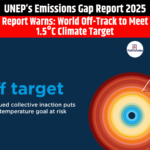Kerala Becomes First Indian State to End Extreme Poverty
|
General Studies Paper II: Poverty and Developmental Issues, Government Policies & Interventions |
Why in News?
Recently, the State Government of Kerala announced that Kerala became the first Indian state to completely eliminate extreme poverty, through years of consistent social welfare measures and inclusive development policies. This showcases Kerala’s long-standing commitment to equality and human dignity.
What is Extreme Poverty?
- Definition: Extreme poverty refers to the condition in which individuals lack the resources to meet the most basic human needs such as food, clean water and shelter etc. Globally it is often defined by the World Bank as living on less than a specific income threshold per person per day, adjusted for purchasing power parity (PPP).
- Criteria: The main criteria used globally include: (a) income or consumption below the defined international poverty line; (b) inability to access essential services such as education, health, safe drinking water and sanitation; (c) persistent deprivation over time rather than a short-term setback.
- Measurement Standards: The World Bank’s global poverty lines serve as benchmarks for extreme poverty across countries. For low-income economies the line is US $3.00/day (2021 PPP); for lower-middle-income economies the line is US $4.20/day; and for upper-middle-income economies US $8.30/day. These thresholds are derived using purchasing power parity conversions.
-
- In India poverty measurement traditionally relied on per-capita consumption expenditure data collected via the National Sample Survey Office (NSSO).
- Committees such as the Tendulkar Committee (2009) and the Rangarajan Committee (2014) recommended methods and thresholds.
- In 2014 the Rangarajan panel suggested a poverty line of roughly ₹33 per day for rural and ₹47 per day for urban per person.
- In India it is measured through National Poverty Lines (based on consumption expenditure) and the Multidimensional Poverty Index (MPI) which considers non-income deprivations such as nutrition, schooling, sanitation and housing.
- Defining and measuring extreme poverty accurately is crucial for directing social protection, measuring progress toward the Sustainable Development Goal 1 which aims to end extreme poverty for all by 2030, and for tailoring interventions.
How Did Kerala Eliminate Extreme Poverty?
- In 2021 the Kerala government launched the flagship scheme titled “Extreme Poverty Eradication Project (EPEP)” with the specific aim to address those families who remained outside even strong welfare systems.
- The programme started with a state-level survey that identified 64,006 families — consisting of 103,099 individuals — as extremely poor, using criteria such as lack of adequate food, unsafe housing, no reliable livelihood and chronic health issues.
- After identification each family was given its own micro-plan addressing their unique combination of deprivations. The plan covered immediate needs (food support, health care), medium term (livelihood support, skill training) and long term (secure housing, land allotment) enabling a holistic uplift.
- The local self-government institutions (LSGIs) and the women-led community network ‘Kudumbashree’ conducted the enumeration, verification and monitoring, thereby increasing accountability and responsiveness. The state ensured that the “last mile” of extremely poor families could be located and supported in a customised manner.
- Many of the identified families lacked basic documentation (such as Aadhaar, ration card, voter ID). The project launched the campaign called Avakasam Athivegam (rights fast-track) to provide those missing entitlements.
- The state government provided access to health insurance, social security pensions, job cards under work guarantee schemes, bank accounts, electricity, and cooking-gas connections.
- The government also leveraged state housing scheme LIFE Mission, land-allotment drives and welfare pensions to support the most marginalised families.
- The government reported building 5,422 new houses and renovating 5,522 homes, and allotting land of 28.32 acres to 439 families under this initiative.
- The government helped 34,672 families earn an extra ₹77 crore through unskilled work. A total of 4,394 families received assistance to start self-employment ventures.
- In health care, the project supported 579 people with assistive devices, aided 7 organ transplants, delivered palliative care to 5,777 patients, and extended medical services to 85,721 individuals from 29,427 families.
- For food security, 2,210 families got cooked meals, 18,438 families received food kits, and 20,648 families benefited from daily meals.
- Authorities provided 21,263 cases of emergency and document aid, ensuring comprehensive support for every identified household.
- By September 2025 the government reported that 53,699 families (84 per cent of the total identified) were moved out of extreme poverty.
- These features enabled Kerala to reach an MPI headcount as low as 0.55 % in 2023 according to the NITI Aayog report.
|
Also Read: Kerala State Senior Citizens Commission Bill 2025 |
Extreme Poverty Status in India
- India has made strong progress in reducing extreme poverty over the past decade. According to the World Bank’s 2023 data, the number of Indians living in extreme poverty dropped from 344 million in 2011-12 to around 75 million in 2022-23.
- The overall poverty rate fell sharply from 27.1% to 5.3% in the same period. This means nearly 269 million people moved out of extreme poverty within a decade.
- Compared to other developing countries, India’s progress has been faster, as global poverty now stands near 8.5%. India’s fall to 5.3% makes it a major contributor to the global decline in poverty.
- The country saw continuous poverty reduction between 2011 and 2023 due to improved rural employment, food distribution systems, and social safety nets. The rural poor benefited from schemes like MGNREGA, PM Awas Yojana, and National Food Security Act. These provided both income support and food security.
- The NITI Aayog’s Multidimensional Poverty Index (MPI) for 2019-21 showed that India’s overall multidimensional poverty declined from 29.2% in 2013-14 to 11.28% in 2019-21. Around 13.5 crore people escaped multidimensional poverty during this period.
- Poverty remains higher in rural India compared to urban areas. In 2019-21, rural poverty stood at 19.28%, while urban poverty was only 5.27%.
- The NITI Aayog’s 2023 report showed that Kerala had the lowest MPI rate of 0.55%, followed by Goa (3.7%), Sikkim (3.8%), and Tamil Nadu (4.9%). On the other hand, Bihar remained the poorest with an MPI of 33.76%, followed by Jharkhand (28.8%), Meghalaya (27%), and Uttar Pradesh (22.9%).
- Southern and western states have shown stronger progress due to better education, health care, and social inclusion. Kerala, Tamil Nadu, Maharashtra, and Gujarat lead in social indicators.
- Northern and eastern states such as Bihar, Jharkhand, and Odisha are improving but continue to struggle with literacy, rural infrastructure, and job creation.
- The Pradhan Mantri Jan Dhan Yojana increased financial inclusion with over 500 million bank accounts. PM Ujjwala Yojana provided clean cooking gas to over 9 crore households, improving health and quality of life. Ayushman Bharat, launched in 2018, extended free health insurance to over 50 crore people, reducing medical poverty.
National Significance of Kerala’s Achievement
- Kerala’s elimination of extreme poverty provides a model example for other Indian states. States facing high poverty levels can study this approach and adapt components like micro-plans, community engagement and benefit integration to their own contexts. This example shifts policy focus from broad programmes alone to precision targeting combined with universal welfare cover.
- India’s commitment to SDG 1 includes the target to “by 2030 eradicate extreme poverty for all people everywhere”. Kerala’s success contributes directly to the national effort by reducing the extreme poverty load in the country. Improved state outcomes raise the overall performance of India in indexes such as the NITI Aayog-led SDG India Index.
- Eradicating extreme poverty in Kerala also has positive ripple effects on other SDGs. Improved housing and sanitation contribute to SDG 6 (Clean Water and Sanitation) and SDG 11 (Sustainable Cities and Communities). Enhanced livelihood and job creation bolster SDG 8 (Decent Work and Economic Growth). This integrated progress illustrates how a focused poverty eradication drive can be a catalyst for wider sustainable development.
|
Also Read: 11 Years of Garib Kalyan |










